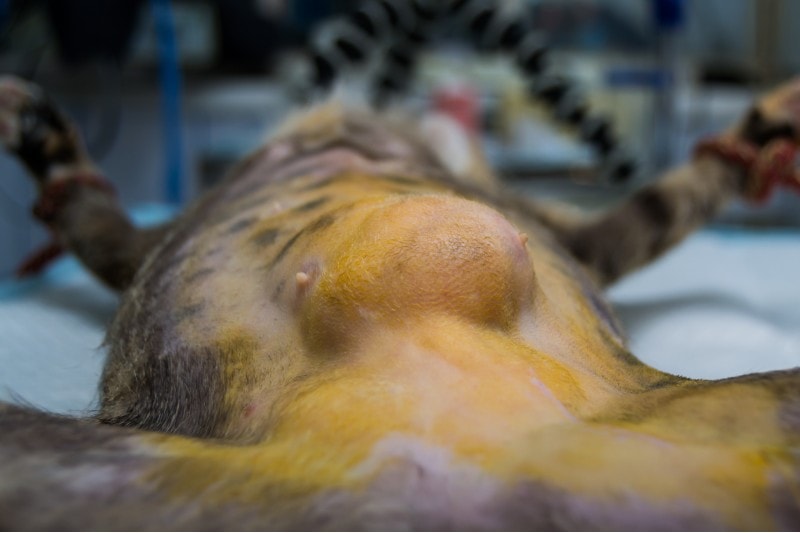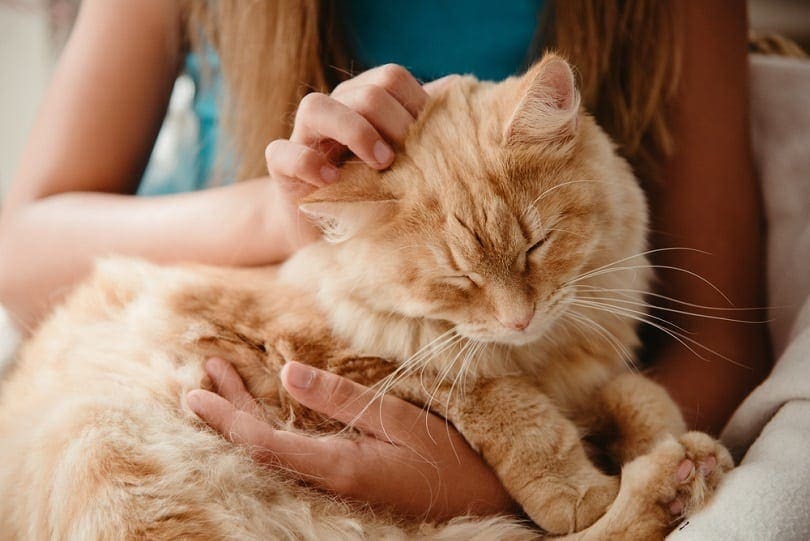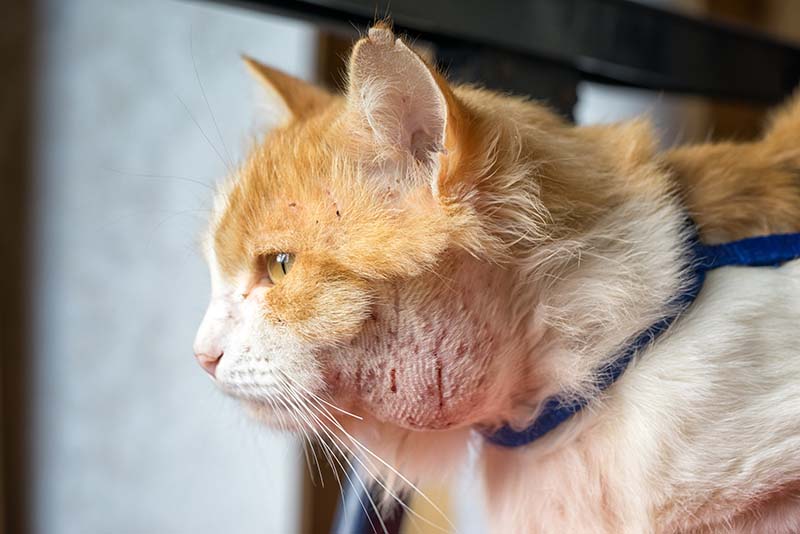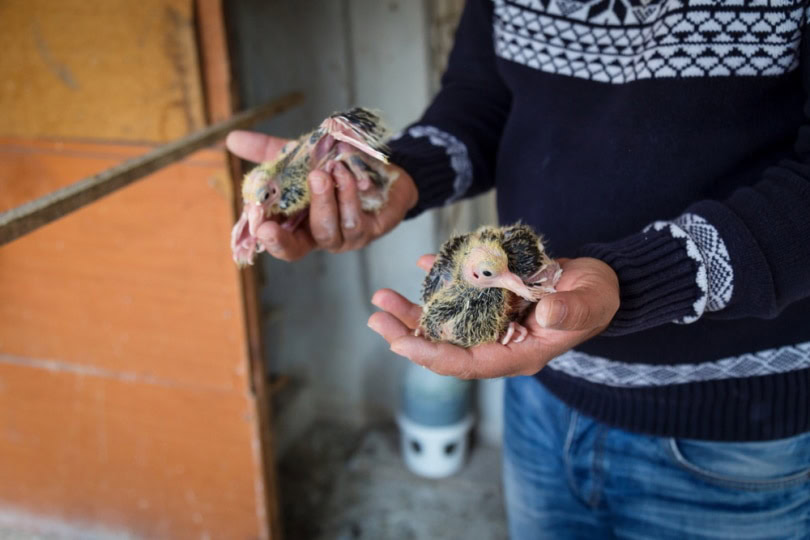VET APPROVED

The information is current and up-to-date in accordance with the latest veterinarian research.
Learn more »Click to Skip Ahead
Main Classifications of Lumps and Bumps
How to Tell What a Lump or Bump Is
How Do You Monitor a Lump?
Reasons to Retest a Lump
How a Vet Monitors a Lump
What Does a Cancer Lump Look and Feel Like?
Should I Pay to Test the Lump?
When Should I Consider Surgically Removing a Lump?
Lumps and bumps on your cat are a reason to be watchful but there is no need to worry unless you have a concrete diagnostic reason. A lump on a cat could be nothing, like a cyst. Or it could be far more serious, like cancer. It could even be something in between.
Unfortunately, without veterinary testing, there is no way to tell the difference.
 Things a Lump or Bump Could Be:
Things a Lump or Bump Could Be:
- Cysts
- Benign lumps
- Scabs or scars
- Injury or trauma
- Abscesses
- Bug bites (including flea bites)
- Cancerous

The 3 Main Classifications of Lumps and Bumps
One way to classify lumps and bumps is based on their need for action. Do they need treatment or not? This is why you need to have them checked out by your vet.
1. Benign: No treatment needed, monitor only
Cysts and benign lumps are common in cats. They do not need treatment or need to be removed (but often can be). They do need to be monitored, though—you need to watch them in case they change. And if they do, particularly if they get bigger in size or change appearance, becoming red or inflamed, they may need to be retested.
Sometimes scabs or scars can be confusing and may feel like a lump on the skin. They hide in the fur, making it difficult to tell what they are.
2. Painful or inflammatory: Treatment needed
Abscesses are common in cats. They are formed by puncture wounds, often during a catfight. They need to be treated because they are so painful.
Bug bites can form lumps, especially if a cat is allergic. For example, it is common for cats to be allergic to fleas and to develop itchy bumps on their back.
If a lump is caused by an allergy, it may need medicine to improve, but the most important thing is to remove the allergen.

3. Individualized treatment required
Cancerous lumps will need treatment depending on the type of cancer and the individual cat.

How to Tell What a Lump or Bump Is
Testing is the only way to know what a lump is. The cells inside the lump need to be examined under a microscope by a vet.
The vet can get these cells by scraping the skin, using a needle to retrieve microscopic cells, or by taking a biopsy. Sometimes surgically removing the lump before definitively diagnosing it might also be an option; in this case, the lump itself is used for testing.
All lumps and bumps are just that, lumps or bumps until proven otherwise by testing.
If your cat’s behavior has not changed and you want an assessment or professional opinion before making an appointment at a clinic, you could contact a virtual licensed veterinarian.
How Do You Monitor a Lump?
Often a vet will tell you to ‘monitor’ or watch a lump. A benign lump can stay unchanged for a cat’s entire life, but sometimes they can turn cancerous, or get infected. When that happens, they usually change their appearance, size and shape. Record the size of the lump or take a picture of it every once in a while. You will also want to be mindful of the appearance of the skin on the lump’s surface.
When you are ‘monitoring’ a lump look at it and examine it, but also feel it with your fingers. If a lump changes you might be surprised at how quickly you notice just by feel. There is usually no need to regularly test lumps if they do not change. But if they do change then they will need to be retested.

Reasons to Retest a Lump
- If the lump appears quickly and grows fast
- Changes shape, size, or color
- Bleeds, discharges, or forms an open ulcer
- Painful
How a Vet Monitors a Lump
Your vet can regularly sample the lump to make sure it remains benign, even if there is a slight change in their size. If the lump changes and becomes cancerous, they will recommend its removal.
What Does a Cancer Lump Look and Feel Like?
Cancerous lumps do not have a ‘look.’ Unfortunately, until a vet knows what cells are making the lump, it is impossible to tell if it is cancerous. Cancerous cells have specific looks but only under a microscope, as do benign cyst cells. And, when a lump is a result of trauma or allergies, the cells are mostly inflammatory, white blood cells.
Most of the time a veterinary pathologist will need to examine the cells because it is a very specialized set of skills distinguishing cell types.

Should I Pay to Test the Lump?
It is usually better to know what a lump is, but sometimes you and your vet may decide not to test a lump.
- If a small lump appears slowly
- If it goes away on its own or after medical treatment
- It does not change
- The cat has other health problems that are a higher priority
- If it does not bother the cat
In addition, sometimes, testing the lump helps treat it at the same time. For example, an abscess can often be drained at the same time as confirming that that is what it is.
When Should I Consider Surgically Removing a Lump?
If a lump is cancerous, discuss it with your vet. Every cancer and every cat will need a different treatment protocol that may or may not involve surgical removal.
Lumps that need immediate treatment, such as abscesses or allergies, will probably go away after appropriate medical treatment. Although, an abscess might need to be drained, and your cat may need to be sedated because of the pain.
Benign lumps can often stay there if they don’t cause problems. But sometimes, even benign lumps can cause problems and will need to be surgically removed.
- Get in the way of walking or running
- Become inflamed and painful from trauma
- Start bleeding
- Located in an inconvenient place, like the eyelids or inner ear

Final Thoughts
The cause of a lump or a bump needs to be figured out. This often requires a veterinarian to examine the cells of the lump itself with a microscope.
Lumps and bumps can run the range between nothing to worry about and everything to worry about. So, if you find a lump be inquisitive and watchful but don’t start worrying until you have a diagnostic reason to be concerned.
See also:
- Histiocytoma (Skin Tumor) in Cats: Our Vet Explains Causes, Signs & Care
- 6 Typical Causes of Scabs on a Cat (Vet Answer): Signs & What to Do
Featured Image Credit: Elena11, Shutterstock












